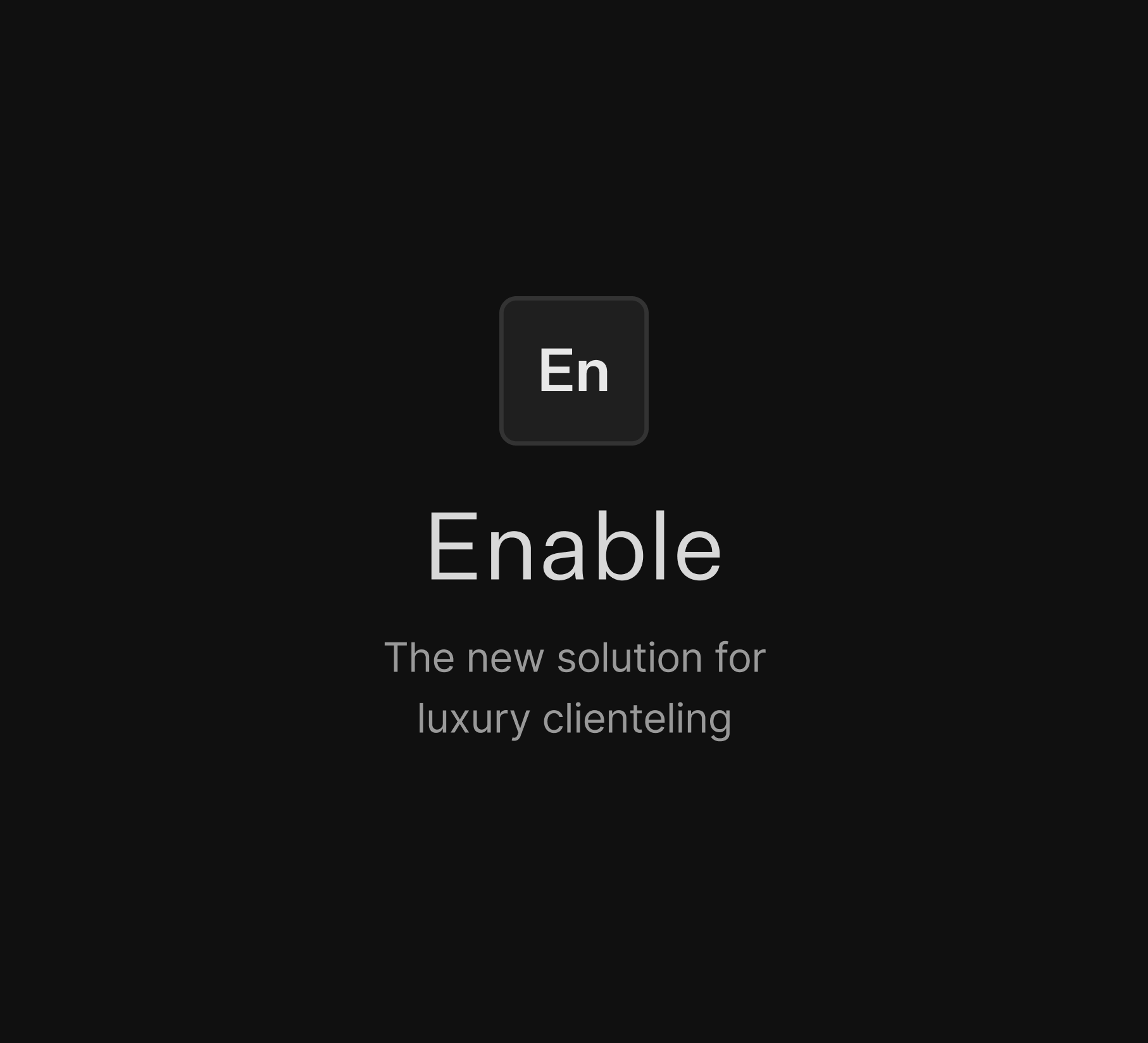
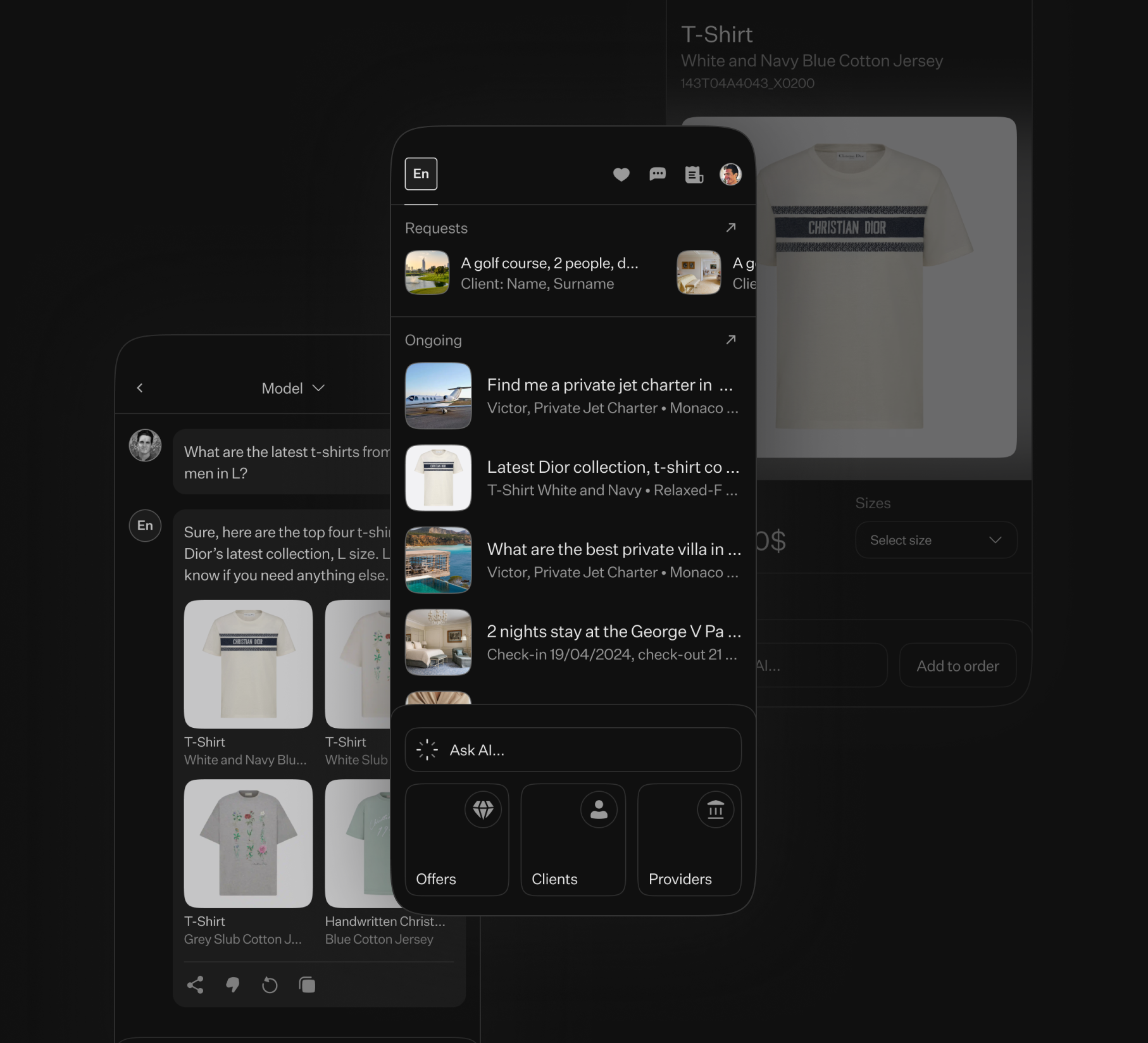


“Enable was born out of the desire to enhance the relationship between Luxury organization’s account managers and their very important clients.”
Context
The problem
Account managers (AM) in Luxury organizations spend too much time on too many steps. From the moment they receive a request from their very important clients (VIC) to the moment the experience ends. Existing workflows between AM and their VIC are time consuming, prone to human error, and prevent business scaling. Below is an overview of said workflow. The table on the left presents the interactions that happen between the VIC, his concierge, and the provider (hotel, jet charter, restaurant, makeup artist etc...).
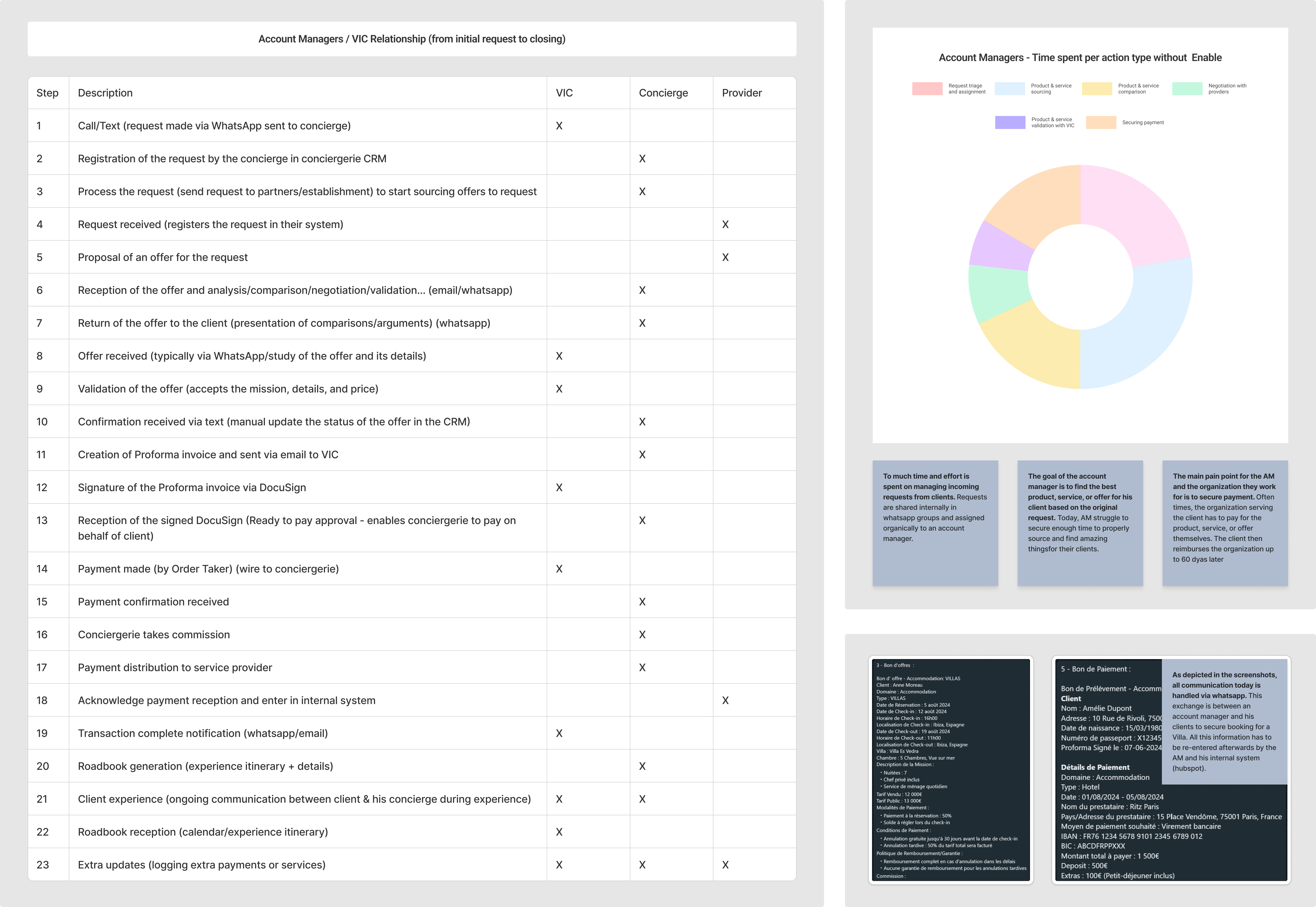
Context
User needs
Account managers and their luxury organizations (i.e. conciergerie, Luxury group division) need tools to 1) simplify incoming client’s request triage, 2) product/service/offer sourcing & comparison, 3) product/service/offer sharing & validation with clients, and 4) Securing payment. For the past 6 months, we have interviewed, entrepreneurs, account managers, and brand owners to really understand what are their situations, motivations, and wishes. Ultimately it comes down to three points: 1) Scaling my business effectively leveraging technology (AI). 2) Manage my customer relationship and sell better to my top clients. 3) Make sure I can get paid quickly, and avoid fronting the cash to secure the product/service/experience. And wait for my client to pay me (up to 60 days later).


“High-value CX with generative models, personal context, and AI search engines.”
Context
Objective
Enable aims at becoming the new solution for Luxury clienteling. Leveraging generative models, AI-powered answer engines, and personal contexts. Enable helps Luxury organizations’ account managers sell better to their most important clients. Enable focuses on streamlining the end to end VIC request lifecycle, from reception to completion. Below, an interaction matrix for account managers and their VIC, without, and with Enable.

Analysis
Affinity diagram
There are inherent difficulties account managers face when it comes to sourcing and validating products/services/offers. Our research lead us to believe that when it comes to sourcing, key pain points are:
- Finding an offer that exceeds the client’s expectations
-
Sifting through vast array of choices
- Securing backup plans
-
Convincing clients to pay upfront can be challenging
- Obtaining timely approval to secure offer
- Luxury clients often require highly customized experiences

Analysis
Product scope
At this stage, we had built a thorough understanding for what Luxury organizations, their account managers and VICs need in a product. These vital needs are:
- Data integration and enrichment: E nrich the information around my products at ingestion .
- Luxury client and product intelligence: Centralize vital company information such as product and client in one place.
- Natural language processing interfaces: Implement NLP interfaces for enhanced UX/CX.
- Personal contexts, generative models, and AI search: Employ generative AI to tailor content and experiences to individual preferences.
- Order & payment processing: Enhance systems for secure, efficient transaction processing.
- Financing: Provide personalized financing options
- Data analytics & business intelligence: Analytics to better understand what shapes my client’s desire.
From these user needs emerged 7 specific feature sets, which can be seen below.

“AI as an assistant. Human agency and decision making at all levels.”
Analysis
User journey
Designing a comprehensive understanding of our users' experiences, by developing detailed customer journey maps for various personas. Each journey captures the steps, thoughts, emotions, and actions our users take while interacting with Dialogue, a platform tailored to the needs of scholars, creative professionals, and executives.
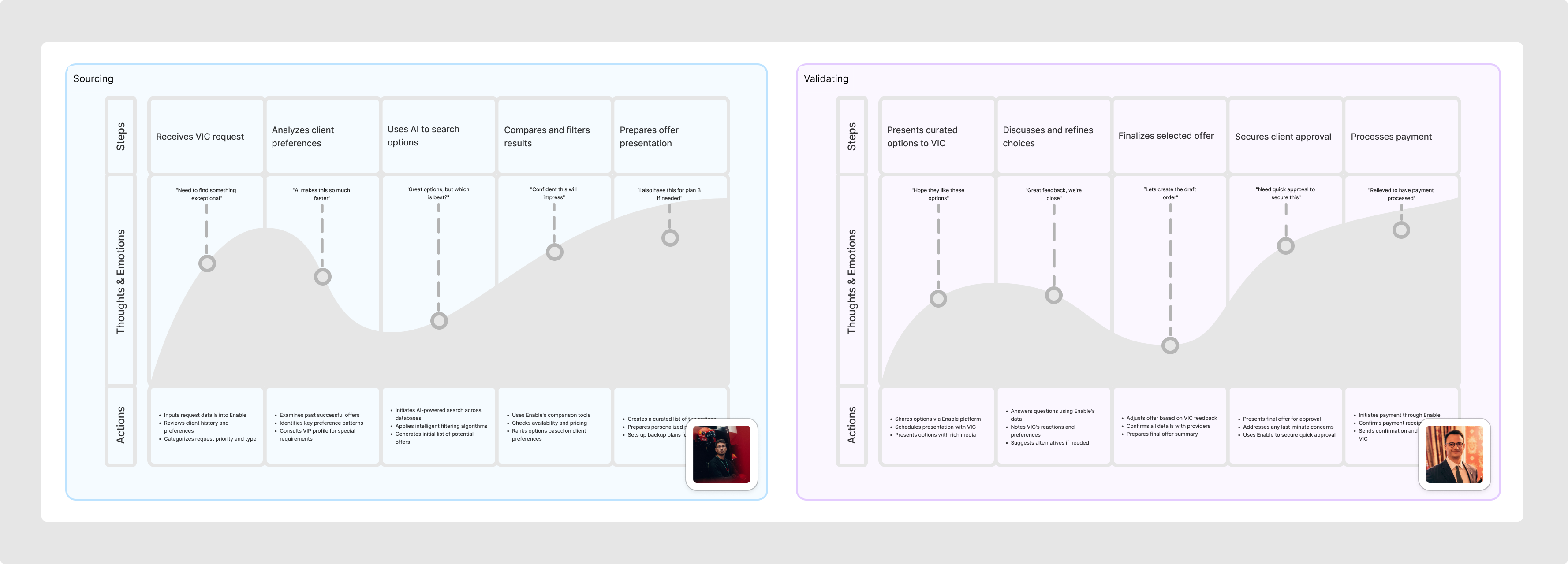
Design
Process
The design process for Enable's UI/UX started with in-depth research on luxury account managers and VIC clients, including interviews and workflow studies. This would inform the creation of user personas and journey maps, guiding the development of wireframes and prototypes. The design would focus on a sleek, premium aesthetic while prioritizing efficiency and clarity.






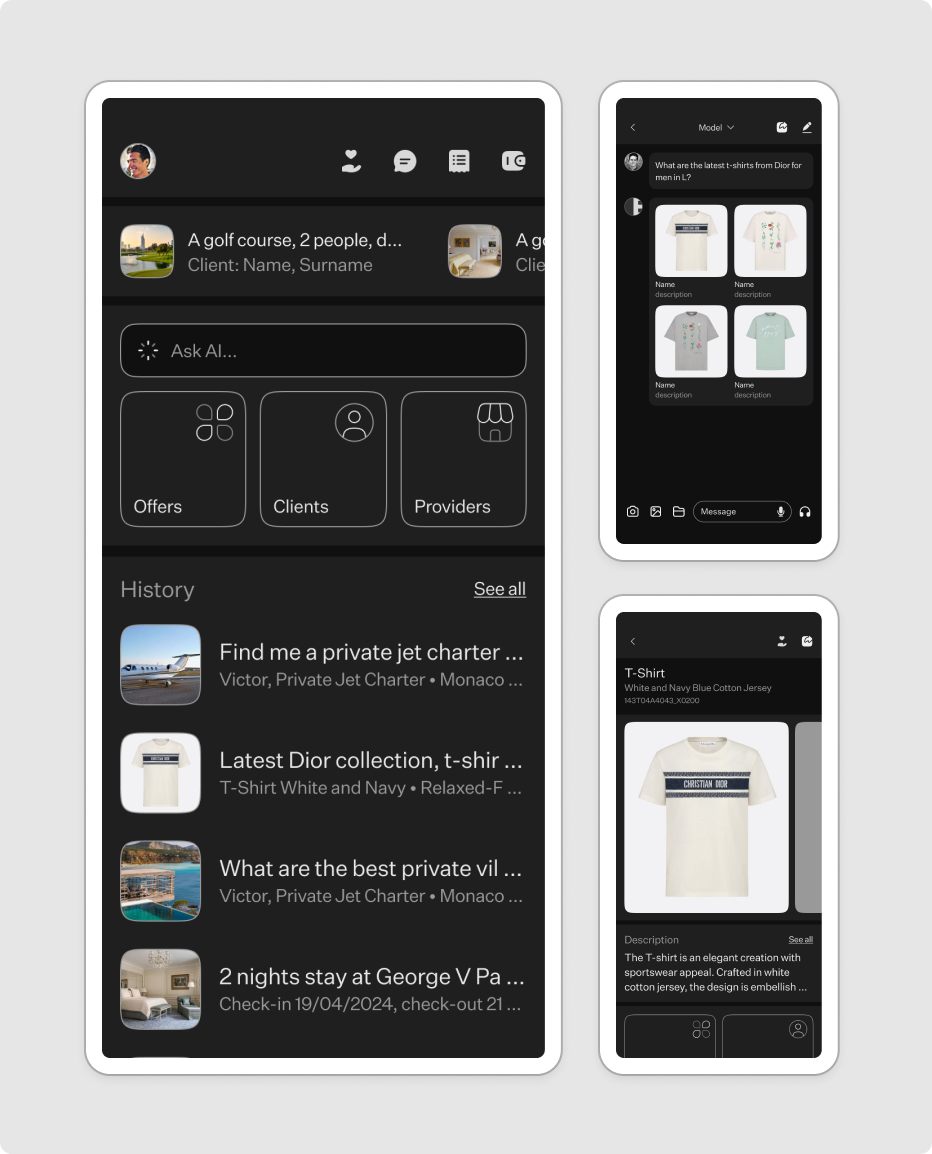

Design
Wireframes
Interactive prototypes were then created to simulate real-world usage, allowing us to conduct usability testing sessions. Feedback from these sessions was crucial in refining the design, ensuring that the final product was both visually appealing and highly functional. We presented black and white mock-ups to the test users so they would focus more on the functionality rather than the way things looked.

Design
Outcome
Enable represents a significant advancement in the luxury clienteling landscape, effectively addressing the inefficiencies and challenges faced by account managers in luxury organizations. By leveraging generative models, AI-powered solutions, and a deep understanding of user needs, Enable streamlines the entire client interaction process, from initial request to final delivery. The thorough research, user-centric design, and iterative testing have culminated in a product that not only enhances operational efficiency but also enriches the overall client experience. As Enable continues to evolve, it is poised to become an indispensable tool for luxury organizations, fostering stronger relationships between account managers and their very important clients.